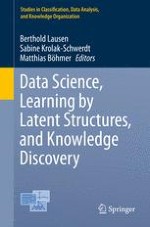2015 | OriginalPaper | Chapter
Flow-Based Dissimilarities: Shortest Path, Commute Time, Max-Flow and Free Energy
Authors : Guillaume Guex, François Bavaud
Published in: Data Science, Learning by Latent Structures, and Knowledge Discovery
Publisher: Springer Berlin Heidelberg
Activate our intelligent search to find suitable subject content or patents.
Select sections of text to find matching patents with Artificial Intelligence. powered by
Select sections of text to find additional relevant content using AI-assisted search. powered by
